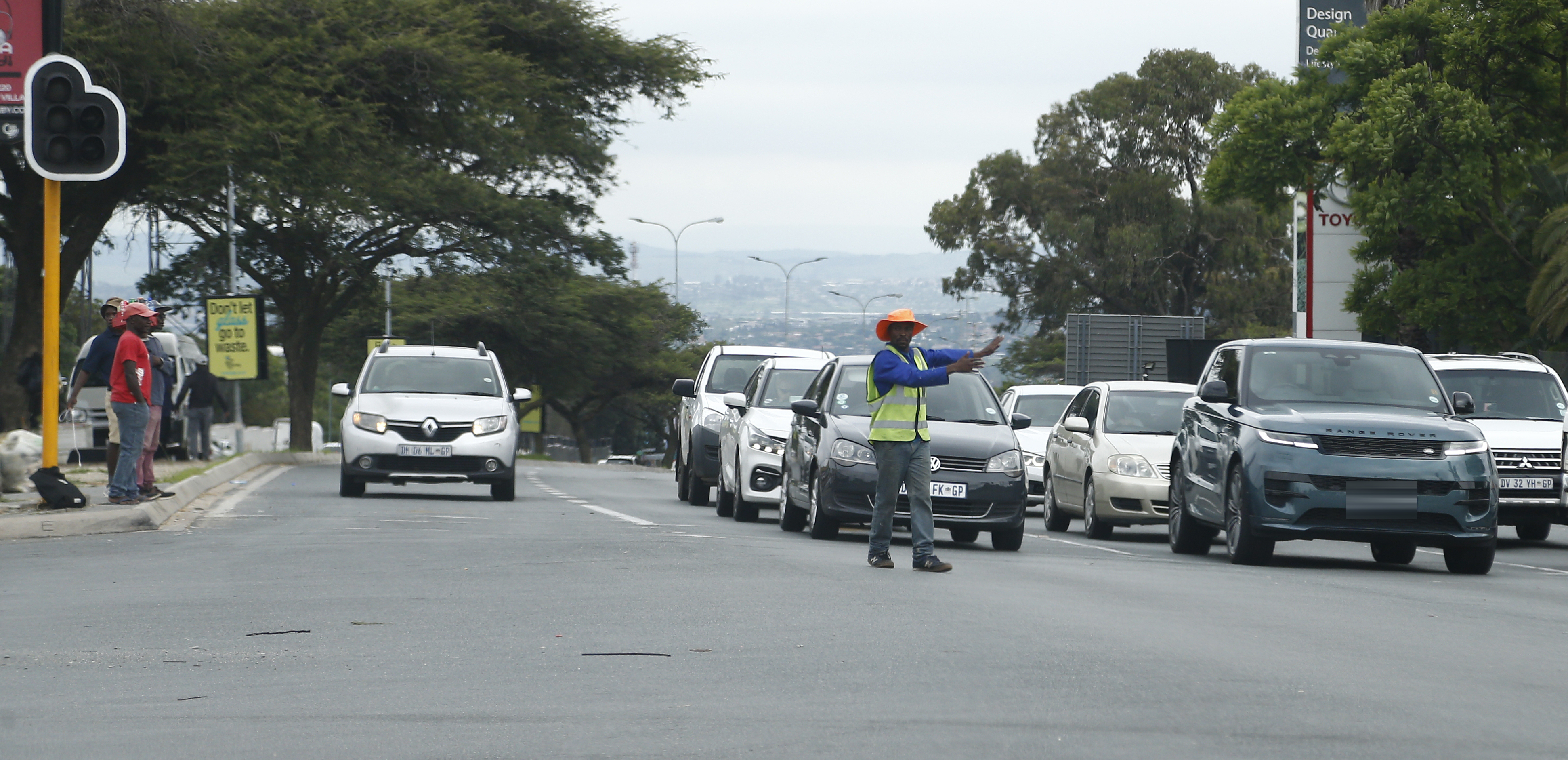Question: Robots in our city are often in crisis. But the traffic lights in Johannesburg have had a really hard start to the year – everywhere, there are complaints of outages. What has happened?
Answer: There are a number of contributors to traffic signals not functioning as intended.
Technical faults are a key factor, often evidenced by flashing traffic lights. These faults have reduced over the years thanks to the JRA’s efforts, including recabling upgrades at many intersections. However, budget reductions have slowed progress. Additionally, 80% of our traffic light controllers now use a remote monitoring system which reports faults to our teams before the public even notices them.
Another major factor is power supply. Traffic lights depend on electricity and outages from Eskom or City Power affect about 31% of lights at any given time, rising to 51% during load shedding. The JRA has partnered with over 40 companies to link traffic signals near their buildings to back-up power, ensuring continuous operation during outages. So far, more than 80 intersections are connected, and another 80 will follow by June this year.
 A pedestrian walks past a broken traffic light on the Voortrekker Road and N12 intersection in Alberton. (Photo: Felix Dlangamandla)
A pedestrian walks past a broken traffic light on the Voortrekker Road and N12 intersection in Alberton. (Photo: Felix Dlangamandla)
Lastly, theft and vandalism are significant contributors. With over 360 cases currently, vandalism ranges from minor damage to the complete removal of [traffic lights at] intersections. Fixing these requires a huge capital injection – approximately R70-million – and longer repair times due to SAPS involvement. While measures like reducing copper content in cables and prosecuting offenders have helped, public awareness and community responsibility remain crucial.
Q: Is the city aware of the impacts on traffic, the economy and citizens’ mental health? There doesn’t seem to be a sense of urgency in addressing these matters.
A: The city is fully aware of these challenges and works continuously to resolve issues within our responsibility. The JRA collaborates with the private sector and academia to explore innovative solutions. Recently, we issued a Request for Information (RFI) to identify ways to combat downtime, and 16 companies responded with ideas we’ll be piloting. This proactive approach aims to relieve congestion for motorists and commuters.
Q: In an interview in November 2024, you said that 83% of the robots managed by the JRA work at any given time on average. Is this still your view, and can you detail how you arrive at this number?
A: As of the second quarter ending December 2024, the number is slightly lower at 80%. This figure is based on technical faults that the JRA is responsible for, such as flashing lights or faulty controllers, and excludes power-related faults, theft and vandalism, which fall outside our direct control. These figures reflect our success in addressing technical issues promptly.
 Non-functioning traffic lights at the intersection of Winnie Mandela Drive and the N1 in Fourways.(Photo: Felix Dlangamandla)
Non-functioning traffic lights at the intersection of Winnie Mandela Drive and the N1 in Fourways.(Photo: Felix Dlangamandla)
Q: The most common perception is that more lights are dysfunctional than functional. How can 83% of your intersections be working if this perception exists?
A: This perception often arises because people see non-functional lights during power outages or after vandalism, which are not service delivery failures by the JRA. For example, during load shedding, traffic lights stop working due to power cuts, not because the infrastructure itself is faulty. Similarly, vandalised intersections take longer to repair due to SAPS investigations and insurance claims, which distort the public’s view of JRA performance.
Q: Should we give up on traffic lights? Citizens report that stop signs are replacing lights in some areas. Is this true, and should we accept it?
A: This is not a sustainable option. Signalised intersections are critical for managing traffic, especially with increasing volumes. While four-way stops may seem like a solution, they significantly slow traffic and are impractical in high-traffic areas. As TomTom and Inrix congestion studies show, Johannesburg is not among the most congested cities globally or even in South Africa, which highlights the effectiveness of our traffic management efforts.
Q: You’ve mentioned that 160 intersections have been sponsored by companies. Could you explain how this works and its overall impact?
A: This programme connects traffic signals to back-up power from nearby companies, ensuring they function during outages. So far, companies like Standard Bank and FNB power intersections near their campuses in the CBD, reducing vandalism and maintaining uptime. While this initiative addresses power issues, theft remains a challenge despite private security monitoring in some areas.
Q: Given ongoing power cuts, shouldn’t the lights have back-ups? What is the plan?
A: At one point, we had over 1,400 UPS (Uninterruptible Power Supply) boxes installed, but theft reduced this number to fewer than 15. Solar panels have also been stolen. While these solutions are not financially viable in their current form, we are exploring compact battery packs and other innovative approaches to improve resilience.
Q: Could you address the list of outages reported and explain the plan for fixing them?
A: More than 60% of the intersections on the list fall under provincial management, which complicates repairs. For example, routes like Malibongwe Drive and Winnie Mandela Drive are managed by the province. JRA is responsible for 2,023 intersections, while the province manages 275, mostly on major roads. Advanced discussions between the provincial MEC and Johannesburg MMC aim to formalise an agreement allowing the JRA to assist with provincial intersections, with funding from the provincial budget. DM
Daily Maverick used ChatGPT to summarise the answers. The transcript was checked by an editor before and after.




 Traffic lights are not working on Winnie Madikizela-Mandela and N1intersection in Fourways.(Photo: Felix Dlangamandla)
Traffic lights are not working on Winnie Madikizela-Mandela and N1intersection in Fourways.(Photo: Felix Dlangamandla) 